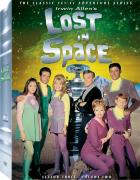Ready to close
Thanks for reading along!
Join some friendly travelers on our "just-pretend" bike trips across the continent
 I'm about 150 miles further east - but I can't seem to update the map, so I don't know exactly where I am. My odometer reads 1797.6 miles for the year right now, but I'll leave the count at the bottom header the same until I find a fix for my gmap. If necessary, I'll just start the track over in mid-Louisiana.
I'm about 150 miles further east - but I can't seem to update the map, so I don't know exactly where I am. My odometer reads 1797.6 miles for the year right now, but I'll leave the count at the bottom header the same until I find a fix for my gmap. If necessary, I'll just start the track over in mid-Louisiana.
 I'm just outside Jacksboro, Texas, northwest of Fort Worth, and I just passed Fort Richardson State Park.
I'm just outside Jacksboro, Texas, northwest of Fort Worth, and I just passed Fort Richardson State Park.Fort Richardson was established in November 1867. Fort Richardson was named in honor of General Israel B. Richardson, who died in the Battle of Antietam during the Civil War. The fort was the northernmost of a line of Federal Forts established after the Civil War. The soldiers arrived in Jacksboro in 1866 with orders to establish a fort at Buffalo Springs, 20 miles north of Jacksboro. Due to unhealthy conditions at Buffalo Springs and the constant Indian raids, the fort was abandoned. The soldiers returned to Jacksboro and eventually received orders to establish a fort on the South Bank of Lost Creek. Expeditions sent from Fort Richardson arrested Indians responsible for the Warren Wagon Train Massacre in 1871 and fought Comanches in Palo Duro Canyon. The Fort was abandoned in May 1878.
Ft. Richardson State Park, Historic Site & Lost Creek Reservoir State Trailway, located northwest of Fort Worth in Jack County, contains 454 acres. The property was acquired in 1968 from the City of Jacksboro and was opened to the public the same year.
 Just passed through the small town of Post, Texas, 41 miles southeast of Lubbock.
Just passed through the small town of Post, Texas, 41 miles southeast of Lubbock. Into a new state! I'm now cycling along the flatlands of northern Texas, hoping as always for a steady tailwind.
Into a new state! I'm now cycling along the flatlands of northern Texas, hoping as always for a steady tailwind. I'm entering Roswell, New Mexico. The town that has made a cottage industry of alien encounters and government conspiracies.
I'm entering Roswell, New Mexico. The town that has made a cottage industry of alien encounters and government conspiracies. I'm heading east from Ruidoso now, passing through the towns of Tinnie and Picacho. Um, I don't think they're on the Internet yet. The New Mexico Tourism Department has no entry for either of them. They do, however, have zip codes, so presumably the US Postal Service has heard of them.
I'm heading east from Ruidoso now, passing through the towns of Tinnie and Picacho. Um, I don't think they're on the Internet yet. The New Mexico Tourism Department has no entry for either of them. They do, however, have zip codes, so presumably the US Postal Service has heard of them.

